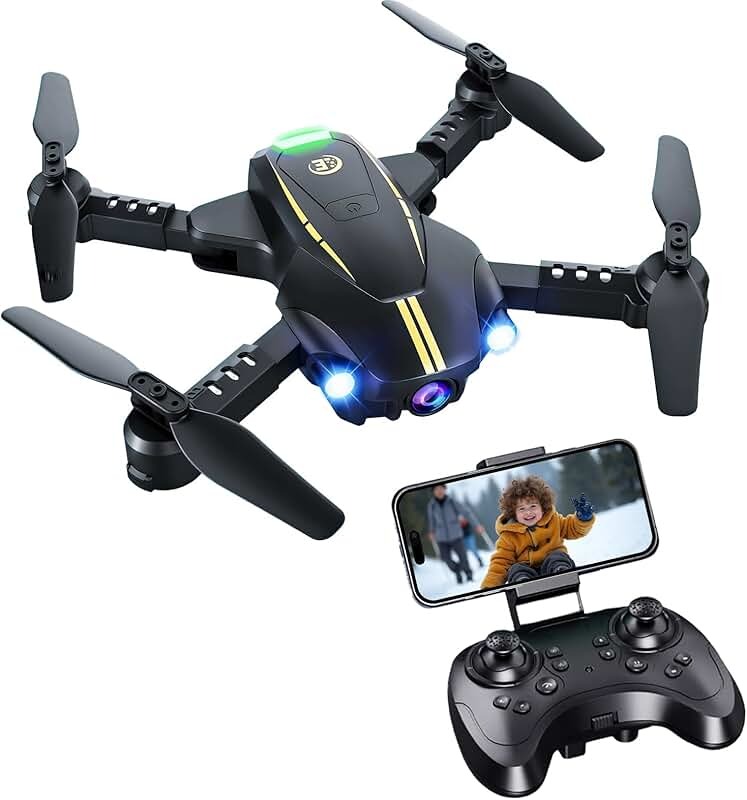The Canadian toy and gadget market has shifted rapidly over the past decade, and drones have become one of the most desired tech toys for children. Among all available brands, the DJI drone has earned a strong reputation for its design, advanced safety features, and ease of use. Parents often ask whether a DJI drone is safe for their children, especially considering Canada’s strict aviation rules and the natural concerns about technology in young hands.
Why Parents Are Considering a DJI Drone for Kids
A DJI drone is not just a flying toy—it is a piece of technology that blends play, learning, and exploration. Parents are attracted to DJI drones for kids because they offer:
- Educational benefits such as introducing children to STEM concepts
- Entertainment value through outdoor play and aerial photography
- Early exposure to technology in a controlled and fun environment
However, with these benefits come safety concerns that need careful attention.
Canadian Drone Regulations Parents Must Know
One of the most important factors when evaluating DJI drone safety for children in Canada is understanding the legal framework.
Age Restrictions in Canada
Transport Canada requires that drone pilots flying drones weighing between 250 grams and 25 kilograms must be at least 14 years old for a basic license. Many DJI drone models fall close to or above this weight category. This means that while children can fly certain DJI drones, direct adult supervision and responsibility are legally required.
Airspace and Flight Restrictions
Parents should be aware that in Canada:
- Drones must be kept at least 30 meters away from bystanders if operated under a basic license.
- Flying near airports, helipads, or emergency sites is prohibited.
- Children cannot operate a DJI drone unsupervised in restricted zones.
Exemptions for Lightweight DJI Drone Models
Some smaller DJI drone models, such as the DJI Mini series, weigh under 250 grams. These do not require a pilot certificate, making them more suitable for supervised child use.
Safety Features That Make DJI Drone Suitable for Kids
DJI has designed its drones with built-in technologies that reduce risk. These features make them safer compared to many other brands in the toy market.
Obstacle Avoidance Systems
Many DJI drone models come with sensors that detect and avoid objects. This prevents crashes and lowers the chances of injury or property damage.
Altitude and Distance Limits
Through the DJI app, parents can set maximum height and distance restrictions. This ensures that children cannot fly the drone too far or too high, keeping flights within safe boundaries.
Return-to-Home Function
If a child loses control or the battery runs low, the DJI drone automatically returns to its takeoff point. This feature minimizes risks of drones getting lost or stuck.
Beginner Flight Modes
DJI provides beginner settings that limit speed and responsiveness, giving children a safer learning environment.
Practical Safety Tips for Parents in Canada
Even with advanced safety features, parental guidance is crucial. Here are steps Canadian parents can take to make DJI drone flying safer for children.
Choosing the Right Model for Kids
- DJI Mini 2 or Mini 3 Pro: Lightweight, under 250 grams, easier for kids to handle
- DJI Tello: Affordable entry-level model designed with education in mind
- Avoid heavier professional drones until children gain more experience
Setting Clear Flying Zones
Select open parks or designated drone-friendly areas in Canada. Avoid crowded spaces where accidents can happen.
Educating Children on Drone Rules
Instead of just handing over the controller, explain Canadian drone laws, safety rules, and respect for others’ privacy. Kids who understand these basics are less likely to misuse their DJI drone.
Supervised Flying Sessions
Younger children should never fly a DJI drone without an adult nearby. Parents can take turns operating with their kids, ensuring safe and enjoyable learning.
Benefits Beyond Fun: Why DJI Drone Helps Children Learn
While safety is the top priority, parents should also recognize the developmental benefits that a DJI drone can bring.
Enhancing STEM Skills
Flying and programming DJI drones through apps introduces children to coding, physics, and problem-solving.
Building Responsibility
Caring for an expensive gadget teaches kids responsibility and careful handling.
Outdoor Engagement
Unlike many digital toys that keep children indoors, DJI drones encourage outdoor play, exploration, and family bonding.
Common Concerns Parents Have About DJI Drone Use
Despite the benefits, many parents hesitate. Let’s address the most frequent concerns.
Risk of Injury
While drones have spinning propellers, DJI includes propeller guards and beginner flight modes that reduce chances of harm. Choosing lighter models further lowers this risk.
Privacy and Security Issues
Canadian parents worry about camera-equipped drones capturing unwanted footage. Setting rules about when and where filming is allowed can help.
Cost of Repairs and Maintenance
DJI drones are not cheap. However, DJI Care Refresh plans provide insurance-like coverage for accidental damage, which can give parents peace of mind.
Expert Advice from Canadian Drone Communities
Canadian drone enthusiasts recommend starting with DJI’s smaller drones, always flying in open fields, and using the DJI Fly app to monitor flights. They emphasize that supervised sessions are the safest way for children to learn. Many parents also join local drone clubs in Canada where kids can safely practice in regulated environments.
Final Thoughts on DJI Drone Safety for Children in Canada
So, how safe is a DJI drone for children in Canada? The answer depends on choosing the right model, following Canadian drone regulations, and ensuring parental supervision. DJI has invested in safety features such as obstacle avoidance, beginner flight modes, and lightweight designs that make their drones suitable for young learners. However, no technology replaces the importance of guidance, responsibility, and awareness of Canadian drone laws.
For Canadian parents, a DJI drone can be both a fun toy and an educational tool when approached with safety and responsibility in mind. With the right precautions, children can enjoy flying while parents remain confident about their well-being.


